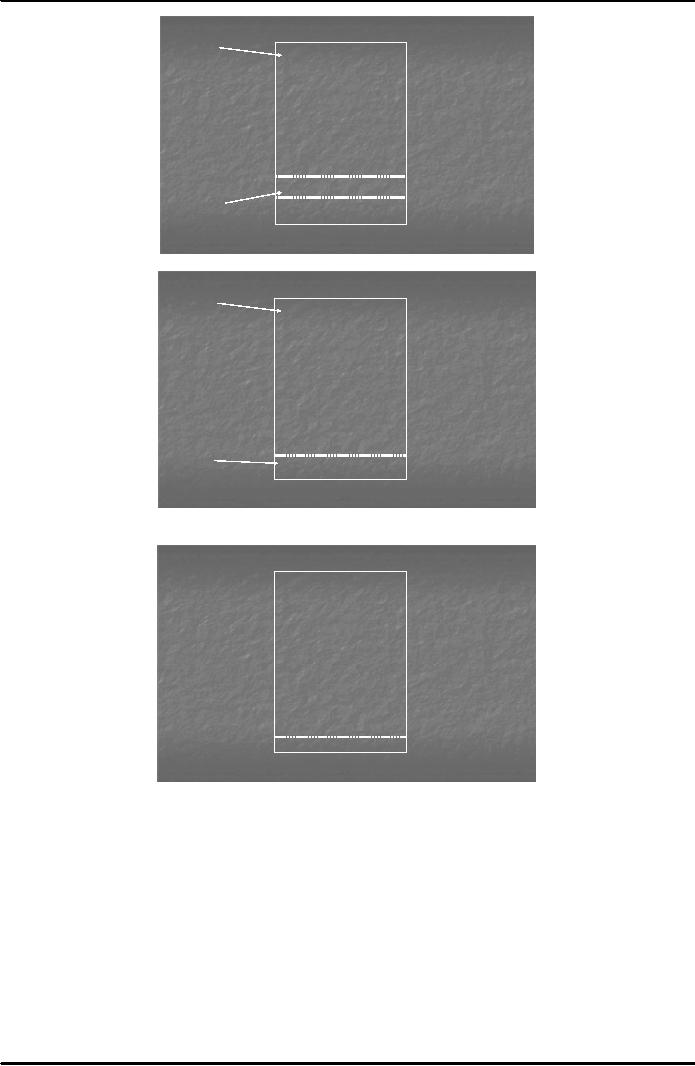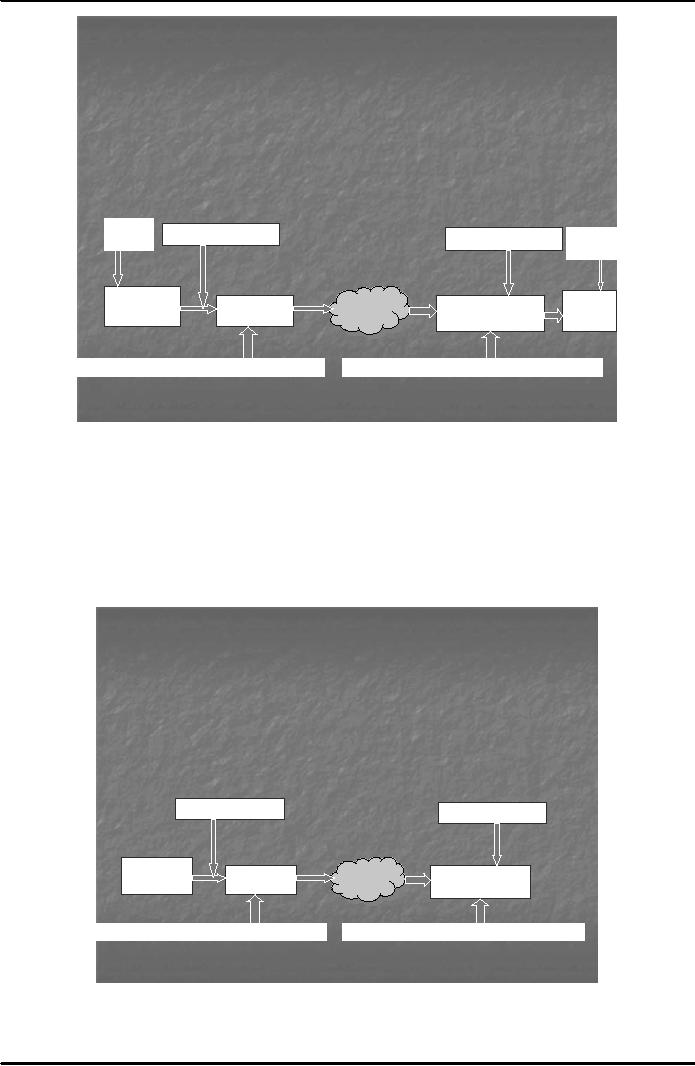 |
HASH FUNCTION AND MESSAGE DIGEST |
| << CRYPTOGRAPHY |
| SYMMETRIC KEY ALGORITHMS >> |

E-COMMERCE
IT430
VU
Lesson
23
HASH
FUNCTION AND MESSAGE
DIGEST
There
are two terms that
you should note here
hash function and message
digest. Hash function is a one-
way
mathematical function applied to a
message. Result of the hash
function is unique to each
message
called
Message Digest. A message
digest is a single large number
typically between 128 to 256
bits in length.
Thus,
we can have up to 2256 different messages each
having a unique message digest associated
with it. This
gives
rise to almost an incalculable figure. We
can safely assume that
each different message that
can
possibly
be typed would have a unique message
digest on applying a hash
function. A hash function is
said
to be
one way because we cannot go
back to the original text on applying the
hash function to a
message
digest.
Basically, the concept of hash
function and message digest
is used to confirm the integrity of
a
message.
Following is the example of a hash
function that can be used in
a code (no need to prepare
it for
exam)
"char
XORhash( char *key, int len)
{
char
hash;
int
i;
for
(hash=0, i=0; i<len; ++i)
hash=hash^key[i];
return
(hash%101);
/* 101
is prime */
}"
Following
example shows how a text
message is encrypted and
digitally signed using
public key
cryptography:
First of all, the
sender types a text message
"Together, we shall make
Pakistan strong...". A hash
function is
applied on the
message to get the message
digest. Assume the message
digest comes to be "1967..." in
this
case.
The message is encrypted
using public key of the
receiver, thus it becomes
scrambled or confidential.
Then
the sender adds his private
key in the obtained message digest to
create his digital
signatures. This
digitally
singed message is received by the
receiver, who applies the
pubic key of the sender to decrypt
the
digital
signature and reveal the
message digest. Then the
receiver uses his private
key to unscramble the
message
itself, and applies the same
hash function received from
the sender to get a message
digest. The
receiver
compares this message digest
with the one sent by the
sender through digital
signature. If both
are
the
same it ensures that the
message has not been
altered during its
transmission. Figures
1-4 given below
explain this
concept:
Public
Together, we
shall make
key
Pakistan
strong ....
receiver
Private
key
sender
1967....
Fig.
1
103

E-COMMERCE
IT430
VU
Confidential
message
a7u/b34+...
Block
Statement Starts Here
3uk7b/...
Digital
Signature
Block
Statement Ends Here
Fig.2
Private
Key
Receiver
a7u/b34+...
Public
Key
Sender
3uk7b/...
Fig.
3
Together, we
shall make
Pakistan
strong ....
1967....
Fig.
4
Process
of Sending Messages Using
Public Key Cryptography
Fig. 5
below shows the working of the
digital signature technology:
104

E-COMMERCE
IT430
VU
How Digital
Signature Technology
Works?
The
Process of Sending Messages
Using Public Key
Cryptography
Hash
Public
Key receiver
Private
Key receiver
Hash
Sender
Receiver
Original
Scrambled
Original
IIneernet
ntt
rnet
Scrambled+Signed
Message
Message
Message
Message
Message
Digest + Private Key of sender
Public
Key sender
to
reveal Message Digest
Fig.
5
Note
that following steps are
involved in the digital signature
process:
1.
Hash function is applied to the original
message in order to find the
message digest.
2. Public
Key of the receiver is used to encrypt
the message.
3. A
digital signature is attached to the
scrambled message by signing the
message digest with
Private
Key of the sender.
4. The
encrypted message, the digital
signature and the hash
function are sent to the
receiver.
5. Public
Key of the sender is used by the
receiver to reveal the message
digest and, thus, to
confirm
identity/authenticity of the sender. In this
regard, the receiver finds the
digital
certificate
certifying the public key of the
sender and checks whether the
digital signature can
be
decrypted with the public
key on the certificate and whether or not
this certificate had been
issued
to the sender by a trust-worthy
certification authority.
6.
Receiver uses his/her Private
Key to decrypt the message. Private Key
is a secret key only
known
to the user.
7.
Receiver applies hash
function to the received original
message and computes the
message
digest.
If this message digest matches
with the one received from
the sender, it confirms that
the
message has not been
altered during transmission.
This ensures integrity of the
message.
Note
that a symmetric key can
also be used for encrypting a
message instead of using the
pair of public and
private
keys. The advantage of using
symmetric key is that since
symmetric algorithms are faster
as
compared
to asymmetric, therefore, the encryption of a
message with the symmetric
key takes place
quickly.
In
order to send the symmetric
key to the receiver, however, the
asymmetric cryptography has to be
used.
PGP
uses this system. See Fig. 6
below.
105

E-COMMERCE
IT430
VU
How Digital
Signature Technology
Works?
The
Process of Sending Messages
Using Public Key
Cryptography
Hash
Symmetric
Key
Symmetric
Key
Hash
Sender
Receiver
Original
Scrambled
Original
IIneernet
ntt
rnet
Scrambled+Signed
Message
Message
Message
Message
Message
Digest + Private Key of sender
Public
Key sender
to
reveal Message Digest
Fig.
6
Where
only the authenticity is to be ensured
and not the integrity, then
a name or a piece of text
can be
chosen
to create the digital signatures. In Fig.
7 below, the word "Imran" has
been used to create a
digital
signature
which can commonly be used
for all different
messages.
Note
that a digital or electronic signature is
believed to be more reliable as compared to
paper signatures
because
it is not ordinarily possible to
copy or forge an electronic/digital
signature. But, that is very
much
possible
in case of paper
signatures.
Symmetric
Key
Symmetric
Key
Original
Scrambled
Inneernet
I tt
rnet
Scrambled+Signed
Message
Message
Message
Imran +
Private Key of sender
Public
Key sender
to
reveal the word
Imran
Fig.
7
106

E-COMMERCE
IT430
VU
Public
Key Infrastructure (PKI)
A PKI is
defines as a structured system
that provides key management facilities,
storage and
management
facilities of
digital certificates and
involves a certification authority. PKI
has its application in
online
contracts,
e-banking, electronic payment systems
such as electronic checks, credit card
based systems,
electronic
cash, micro payment systems
etc.
Key
Length
A cryptographic
key is represented as a string of binary
digits 0's & 1's- inside a
computer. If a key is 1 bit
in
length it means two possible
keys, that is, 0 and 1. If a
key is 2 bits in length it means
four possible key
values,
00, 01, 10 and 11. A
Key having 3 bits length means 8
possible values -
000,001,010,011,100,101,110,111.
From this, one can derive a
general formula, that is,
Number of keys =
2(number f
bits)
107
Table of Contents:
- E-COMMERCE
- WHAT IS A NETWORK
- HOW MANY CLASS A, B, C NETWORKS AND HOSTS ARE POSSIBLE
- NETWORKING DEVICES
- BASICS OF HTML 1
- BASICS OF HTML 2
- TEXT BOXES, CHECK BOXES, RADIO BUTTONS
- FRAMES AND IMAGES IN HTML
- TAG ATTRIBUTES, SOUNDS FILES, ANIMATIONS
- STYLE SHEETS 1
- STYLE SHEETS 2
- SOME USEFUL STYLE SHEETS PROPERTIES
- JAVA SCRIPTING 1
- JAVA SCRIPTING 2
- JAVA SCRIPTING 3
- JAVA SCRIPTING AND XML
- CLIENT AND SERVER SIDE PROCESSING OF DATA
- APPLETS, CGI SCRIPTS
- MAINTAINING STATE IN A STATELESS SYSTEM
- INTEGRATION WITH ERP SYSTEMS
- FIREWALLS
- CRYPTOGRAPHY
- HASH FUNCTION AND MESSAGE DIGEST
- SYMMETRIC KEY ALGORITHMS
- VIRTUAL PIN PAYMENT SYSTEM
- E-CASH PAYMENT SYSTEM 1
- E-CASH PAYMENT SYSTEM 2
- SECURE SOCKET LAYER (SSL)
- E-BUSINESS: DISADVANTAGES OF E-BUSINESS
- E-BUSINESS REVENUE MODELS
- E-MAIL MARKETING
- CUSTOMER RELATIONSHIP MANAGEMENT (CRM)
- META INFORMATION
- DATA MINING
- CONFIDENCE AND SUPPORT
- ELECTRONIC DATA INTERCHANGE (EDI)
- PERSONAL FINANCE ONLINE
- SUPPLY CHAIN
- PORTER’S MODEL OF COMPETITIVE RIVALRY
- BARRIERS TO INTERNATIONAL E-COMMERCE
- ELECTRONIC TRANSACTIONS ORDINANCE, 2002 - 1
- ELECTRONIC TRANSACTIONS ORDINANCE, 2002 - 2
- ELECTRONIC TRANSACTIONS ORDINANCE, 2002 - 3
- GLOBAL LEGAL ISSUES OF E-COMMERCE - 1
- GLOBAL LEGAL ISSUES OF E-COMMERCE - 2